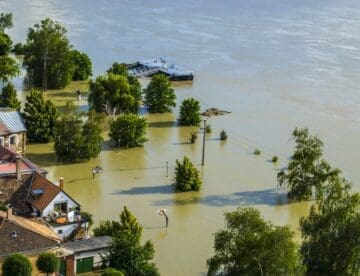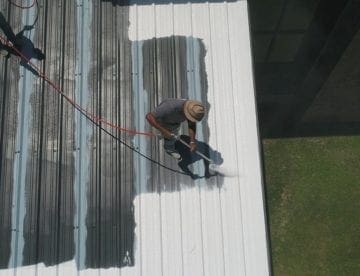Finding water damage on the ceiling can be a worrying sign for any homeowner. Roof leaks are a common cause of such problems. But this might not always be the case. Your wall or ceiling could also be damaged by excessive condensation. Dealing with condensation problems is less complicated and easier on the budget than repairing ceiling stains caused by a roof leak.
Accuracy is crucial in determining the cause of a ceiling stain before you try to fix it. So, how can you tell if your ceiling stain is caused by a roof leak or condensation? We’ll show you how to find out in the article below.
Do I have a Leaky Roof?
If you notice excessive moisture every time it rains, water is probably leaking through your roof system. Several things could lead to a leaky roof. Leaks are often a result of damaged or worn out shingles, poor flashing, or improper installation. These problems can damage your house and should be dealt with as soon as you notice them. If you’re currently in such a situation, you should immediately call a certified professional roofing company to inspect and repair the damage.
Is My Ceiling Wet From Condensation?
Your roof most likely isn’t leaking if you can’t directly track down a leak or identify any exterior damage. That means that the water stain on your ceiling is caused by condensation. Condensation appears when there’s too much moisture in the air for a specific temperature. It can come from many different factors. Any indoor activity that uses water puts more moisture into the air.
In other words, activities like cooking, showering, and even running the dishwasher or washing machine all contribute to indoor humidity. Although damage from condensation isn’t as immediately noticeable as a leaky roof, it can still be severe. Condensation can cause your ceiling to substantially deteriorate over time. So much so, that it can even lead to it collapsing entirely.
How to Spot Condensation Problems Quickly
Indoor condensation can cause the paint to peel and can lead to warping and rotting wood. Also, permanent condensation can cause mold and mildew, and bring a heap of health issues into your household. That’s why the best way to deal with condensation is to act quickly when the early signs damage manifest.
The most significant warning sign comes in the form of window condensation. This is when the glass provides a visible cold surface, which allows humidity to condense. While it can appear in almost any type of climate, water condensation mostly materializes in environments where the average temperatures hover around 35° F or lower.
How to Prevent and Deal with Water Condensation
There are a few daily routines you can implement to address water condensation. These habits are simple but will go a long way in preventing condensation problems from forming. Let’s take a look at the best ways to take care of water condensation next.
Reduce the Use of Your Humidifier
This seems like an obvious and simple step to take. But most people tend to overuse their humidifiers. This is especially the case during winter when there’s a significant difference between outdoor and indoor temperatures. The added humidity can quickly lead to condensation problems, especially in your attic. People living in the tropical parts of the US don’t have such issues. But if you live in any other part of the US, consider minimizing the use of your humidifier during winter months.
Check Your Air Vents
Many homeowners think they can save money on the electricity bills by shutting vents in rooms they don’t use. In fact, closing vents will waste energy and can also damage your furnace or HVAC system. Open all vents and check if all of them are working without any problems. Pay extra attention to the vent exhaust and any vents that lead to your attic.
In the same line, also examine ventilation hoses or tubes. In some cases, they can shift out of place or become unsealed. If necessary, add additional vents on your roof, such as turbine vents or box vents. They’ll help circulate warm air and reduce any condensation issues.
Install Quality Fans in Your Bathroom and Kitchen
Exhaust fans in your kitchen and bathroom can play a vital role in reducing condensation. This is why you should ensure that you have robust and reliable fans installed in these rooms. Run these fans whenever you’re cooking or taking a shower or bath. When it comes to the latter, it’s best to leave the fans on for about half an hour afterward to allow the humidity levels to return back to normal. These fans should never be discharged into the attic space.
If none of these steps help reduce condensation, you may be facing another, more severe issue. The two most common reasons for persistent condensation are insufficient insulation and poor ventilation.
Need Help in Dealing with Roof Leaks or Condensation?
Maybe your roof has been compromised and is leaking. Perhaps you’re having problems in dealing with persistent condensation. Whatever the case may be, you shouldn’t hesitate to ask for professional help. We’re always available and eager to provide assistance. Our experienced contractors will inspect your household and help you find the source of your water damage.We provide roofing services for the Tampa Bay Area and Florida Panhandle. Call us today at 813-373-9088 or fill out our online form and get a free estimate for your first service.




